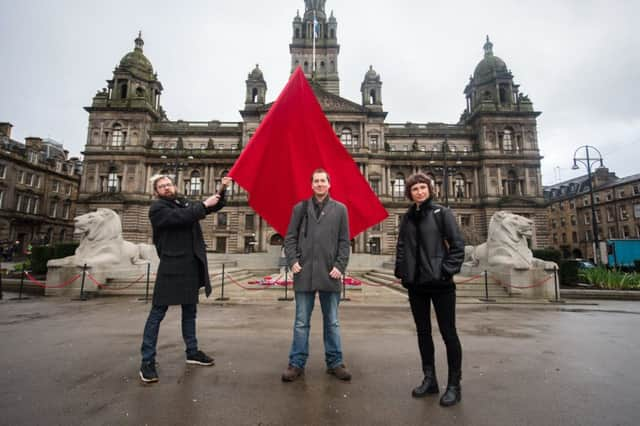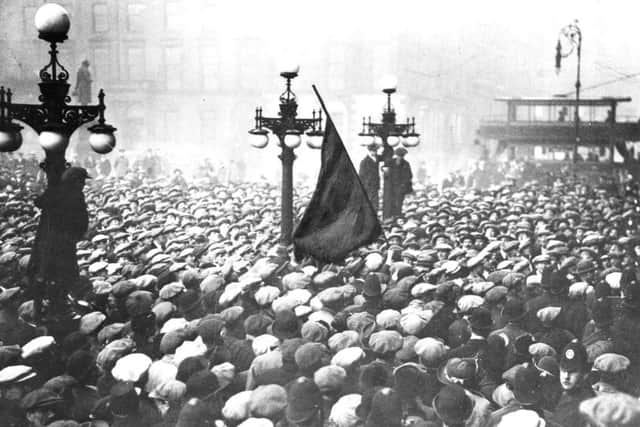Glasgow walk recalls true story of historic ‘Bloody Friday’


The events of 31 January 1919 in Glasgow are now better known as the Battle of George Square – a day that has become mythologised over the years.
Now a group of contemporary historians will attempt to tell the real story of what happened in the city centre that day to mark the 100th anniversary of what has become a defining chapter in Scottish labour history.
Advertisement
Hide AdA free walking tour will take place this Saturday which will show the key sites in a period of social unrest which ultimately led to police baton-charging the assembled crowd in George Square and the arrest of several prominent union leaders.


Organisers will explain the so-called battle was only one incident in a wider industrial action, which aimed to cut the working week to 40 hours. “The 40-hour strike should be remembered as a mass movement for economic democracy at a pivotal political moment,” said Ewan Gibbs, a lecturer in social policy at the University of the West of Scotland, and one of the walk’s co-organisers.
“Full male and partial women’s suffrage had only just been granted, wartime had led to unprecedented state intervention in industry and trade unions had made major advances. In effect 1919 should be regarded as a major episode in contesting the limits of democracy – especially with regards to the workplace and state regulation of the economy.”
The walk will also explain some of the myths that surround the Battle of George Square. It is often claimed tanks were deployed in the city on the orders of Westminster. In fact it was Glasgow’s city council that requested military assistance – but the tanks remained unused in a nearby market.
Henry Bell, the author of a recent biography on socialist campaigner John Maclean, said the events of that day should not be viewed in isolation.
“I think Glasgow in 1919 saw a real confrontation between the people and the establishment,” he added. “The massacre of the First World War had radically changed society, and workers in Scotland were laying claim to what that new society would look like.
Advertisement
Hide Ad“They wanted work, housing, security and control of their own lives. Some of that was won in the decades that followed. Some of it is still being fought for.”
A much less well-known event in January 1919 will also be retold. The walking tour will visit the Broomielaw on Clydeside, which was then the heart of Glasgow’s merchant marine industry.
Advertisement
Hide Ad“The dockside was at the centre of a significantly less optimistic episode of industrial unrest only eight days before the scenes in George Square took place,” Gibbs explained. “On January 23, black sailors were attacked by a mob of their white colleagues who had been incensed by their union.
“These events are part of Glasgow’s working-class history. They also demonstrate the complexities and contradictions, and failings, of labour politics.
“I hope the tour will present a picture of Red Clydeside as being formed by struggles for economic justice, industrial democracy and peace. I further hope it will indicate that it incorporated significant contrary political currents.
“The 40-hours strike merits a better history than having the schema of a ‘revolutionary situation’ imposed on it.”
The tour will meet at George Square at noon on 2 February.